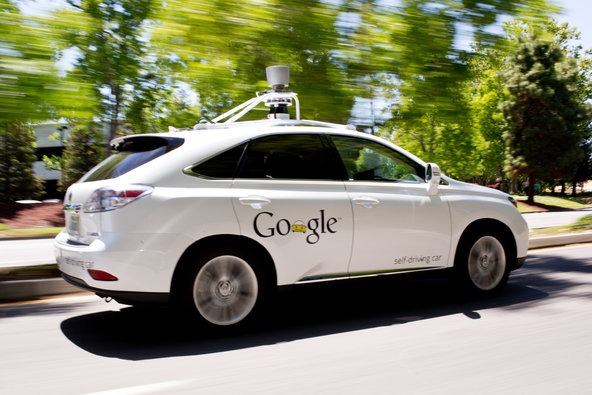After six years of testing and millions of miles travelled, one of Google Inc.’s self-driving prototype cars was finally involved in its first accidents with injury on Thursday in Mountain View, California. Google, better known for its ubiquitous search engine, is quickly emerging as a leader in the self-driving car industry and regularly tests on public roadways. Thankfully only minor injuries were reported to its passengers and employees.
Google stated that the three employees involved in the July 1st rear-ending complained of minor whiplash and were examined and released to go back to work. The other car’s driver also complained of pain in his back and neck.
In California, an individual has to ride behind the wheel of any self-driving vehicle tested on public roadways in order to take control in an emergency situation. Typically, Google sends an additional employee out in the passenger seat in order to record information concerning the ride on a laptop. In this instance, there was a passenger in the back seat too.
Google has heavily invested as a leader of self-driving vehicles; technology it feels will ultimately be more efficient and safer than human drivers.
Google stated that in six years of testing and 1.9 million miles, this was the 14th accident. Google also stated that its cars have not been the cause of any accidents, even though in 2011 a car was taken out of self-driving mode and used on an errand by an employee who was rear-ended by another vehicle.
Google also said that its cars were rear-ended in 11 out of 14 of the accidents.
Chris Urmson, head of Google’s self-driving car program, wrote in a blog post on Thursday that his cars “are being hit surprisingly often” by distracted drivers, perhaps people looking at their phones.
“The clear theme is human error and inattention,” Urmson wrote. “We’ll take all this as a signal that we’re starting to compare favorably with human drivers.”
Urmson said in a telephone interview that his team was looking in to whether its cars could somehow alert distracted drivers prior to a collision. Honking is one possibility, but Urmson stated he did not want to annoy the residents of Mountain View.
In an accident report filed by Google with the California Department of Motor Vehicles concerning the July 1 crash:
Google’s SUV was travelling behind two other vehicles at approximately 15 mph in self-driving mode as the vehicles approached a green light at an intersection.
The first car slowly came to a stop in order to avoid blocking the intersection — traffic was completely stopped on the far side. The Google car along with the car in front of it stopped.
Within approximately a second, a fourth vehicle rear-ended the Google vehicle at approximately 17 mph. The other car failed to brake according to on-board sensors.
The other car’s driver reported “minor neck and back pain.” The SUV’s rear bumper suffered minor damages, and the vehicle that hit it losing its front bumper.
While Mountain View police responded, an accident report was not filed.
The collision puts the company into interesting legal territory about just who takes the blame if fault must be assigned in a crash. Given Google’s vehicles are not piloted by humans, who merely observe the actions of the computer, there are questions of liability – is it the vehicle’s owner or Google itself that should be blamed?
The rarity of human harm caused by the vehicles has thus far not fully opened this can of legal worms but this is expected to be a significant hurdle for the industry to cross as the technology becomes more widespread.
Stay Connected